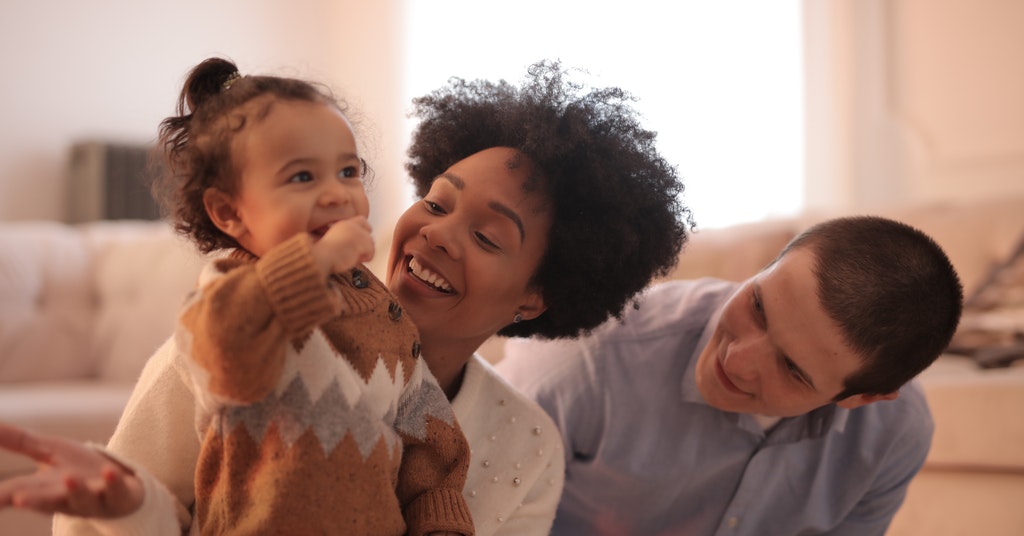
Facebook gets deaf-friendly with auto captions
June 8, 2017
The one hearing aid accessory that makes parenting so much easier
June 12, 20175 Common Hearing Aid Challenges for Kids and How to Solve Them

If you have an infant wearing hearing aids, then you know how incredible it is to have your child hear your voice clearly for the first time. However, you might also know that dealing with hearing aids and an infant can be tricky.
Having to keep hearing aids in a baby’s ears can pose unique challenges. If you are new to the hearing loss world you might be wondering how to handle some tricky situations.
Two of my three children have hearing loss that was detected by the newborn hearing test on day two of life. With the early detection, we were able to start the process to get my children their hearing aids early in life. For my son, he had his hearing aids at 3-months-old. For my daughter, she received them at 4 months of age.
Here are the areas that we found challenging for our infants wearing hearing aids and practical solutions that we actually used to help.
Challenge #1: Is my child benefiting from their hearing aid?
Solution: Pay attention to their behavior
When a child has hearing aids as an infant they can’t give verbal feedback on how they feel or work – for example, when a hearing aid is set too soft or too loud.
As a parent, it is important to partner with your child’s therapist and audiology to watch for behavioral cues that might indicate that the hearing aid is not set accurately. Cues would include jumping and crying often when there is noise with the hearing aids are on. On the other hand, limited responses when your child’s hearing aid is on can indicate they need to be adjusted.
In addition, when we were in a place where there was a lot of noise, my children often became fussy. I would have a hard time knowing if they were fussy because they were over stimulated with noise, or if they were just hungry and tired. In those situations, I took out the hearing aids until we were in a quieter setting. Make sure you discuss these situations with your audiologist, so they can adjust the hearing aids, if necessary.
Challenge #2: Keeping your child’s hearing aids in
Solution: Fun accessories and a backup plan
Just the thought of losing a hearing aid can make one break out in a cold sweat. When you are working with children, you do the best you can – but there may likely be a time when you look down and your little one is missing a hearing aid.
My son went through a season where he would throw his hearing aids off whenever the battery died, wherever he was at. This happened because he could hear better without his hearing aids, verse a hearing aid with a dead battery clogging up all his hearing. We have found his hearing aids strangled up in bed sheets, smooched into a rug and scattered at a park.
While the thought of losing a hearing aid can bring on anxiety, there are many ways to avoid this situation.
While the thought of losing a hearing aid can bring on anxiety, there are many ways to avoid this situation. Using a clip system, hat, or headband helps to keep them in place and attached if taken off. In addition, you can get insurance to cover losing the hearing aids one time. While this is not an insurance you even want to have to use, it helps to have it in the back of your mind.
Read More: Ask Anna: How do I keep my baby’s hearing aids in?
Challenge #3: Small ear molds and feedback
Solution: Regular re-fits and headbands
It seems that at any turn my kids’ ear molds were popping out and giving off feedback. (Feedback is that whistling sound that happens when the sounds leave your ear and into the microphone.) With little ones, their ears are growing so fast. This means that they have to get new ear molds more often.
For my daughter, I use a headband. I run the elastic part over the hearing aid and the ear mold. This holds the ear molds in place and helped to control the feedback until her new ear molds here ready.
Read more: Ask Anna: Why do hearing aids whistle?
Challenge #4: Taking Hearing Aids Out
Solution: Establishing a bedtime routine
Getting my son to take his hearing aids out at night became a problem for us. After a few years of wearing his hearing aids, he got to the point that he did not want to take them out – ever. A good problem to have, yes, but still a problem. He wanted to sleep in them every single night. Our solution at the time was to let him fall asleep with them in.
Before I went to bed, I would sneak in and take them out. Eventually, when my son could put his hearing aids in himself in the morning, this problem went away. At that time, we were able to establish a great nighttime routine for his hearing aids and a special spot where we put them each night.
Read more: Tips for establishing a bedtime routine for deaf children
Challenge #5: Avoiding Water
Solution: Learn hearing aid care tips and sign language
Avoiding water can be hard to always remember to do, and I personally had a hard time giving myself the permission to take my children’s hearing aids out during these times. It made me feel like they were going to miss out on something.
Many hearing aids are water resistant, but not waterproof. This means that most hearing aids are made to handle sweat and light rain, but should not be immersed in water. They should be taken out for bath time, the pool and the beach. However, playing in sprinklers and splash parks can be OK, as long as their hearing aids are not fully immersed.
“In general, hearing aids should be able to withstand rain, sweat and water splashes, but his hearing aids should not be worn in the shower or pool,” according to “Ask Anna.” “If he does jump in the shower or the pool and forgets he is wearing his hearing aids, you should dry the hearing aids and replace the battery as soon as you can. Most will spring to life again.”
Read more: Ask Anna: Can my Child Play in Water with Their Hearing Aid?
In addition to practicing water safety with my children’s hearing aids, I also connect with my babies in other ways at the pool or beach, through my facial expressions and signing. I also used the times he was not wearing hearing aids to become an advocate for him. I reminded those around us of his hearing loss, and used it as a time to educate others and give strategies to help others communicate with him.
The Challenges Are Worth the Effort
For any new parent that is entering into the world of hearing aids with their infant, there are many suggestions that people will offer that will be helpful. Each parent and child will have their own challenges too. Every child is different and not all options will work for your kid.
Try out different solutions and see what system will work best for you and your little one. While having an infant or toddler with hearing aids has challenges, the gift of hearing with clarity is worth all the effort.
We would love to see your solutions and what has worked for your child or student. Please feel free to share your favorite tool to help your infant and toddler with their hearing aids!




